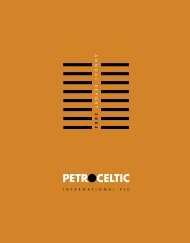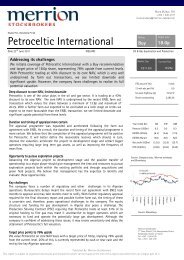Quarterly Bulletin Q3 2013
Quarterly Bulletin Q3 2013
Quarterly Bulletin Q3 2013
You also want an ePaper? Increase the reach of your titles
YUMPU automatically turns print PDFs into web optimized ePapers that Google loves.
The Domestic Economy<br />
<strong>Quarterly</strong> <strong>Bulletin</strong> 03 / July 13<br />
29<br />
following the Government’s decision to close<br />
it to new liabilities from the end of March.<br />
Combined, these developments resulted in<br />
total revenue increasing by €1.8 billion year-onyear.<br />
On the expenditure side, a strong decline in<br />
net voted spending comfortably outweighed<br />
an increase in non-voted outlays. Focusing<br />
on the former first, total net voted expenditure<br />
was €1.4 billion lower on an annual basis and<br />
2.5 per cent below profile, as both current and<br />
capital spending came in below expectations.<br />
All but one vote group was below profile by<br />
mid-year, with the biggest divergences from<br />
target – in nominal terms - occurring in Health<br />
and Environment. The €421m increase in nonvoted<br />
expenditure, meanwhile, was driven by<br />
€939 million of ELG payments arising from the<br />
liquidation of IBRC and a significant increase<br />
in debt servicing costs; factors partly offset<br />
by last year’s €1.3 billion acquisition of Irish<br />
Life falling out of the base. Taking account of<br />
all of these developments, total expenditure<br />
recorded an annual contraction of €1 billion<br />
from the same period in 2012.<br />
Focusing on the medium-term, in June it was<br />
confirmed that the average weighted maturity<br />
of programme loans made to Ireland from the<br />
European Financial Stability Facility (EFSF) and<br />
the European Stabilisation Mechanism (ESM)<br />
would be extended by up to seven years.<br />
Combined, these facilities have committed<br />
to just over €40 billion of the €85 billion<br />
package of financial assistance for Ireland.<br />
This significant decision will have a favourable<br />
impact on funding needs in the coming years,<br />
smoothing the national debt redemption profile<br />
and supporting a return to full market based<br />
financing. It is expected to remove a market<br />
financing requirement of around €20 billion<br />
over the period 2015 to 2022, with the funding<br />
requirement for 2015 being reduced by over<br />
€6 billion.<br />
Exchequer Financing<br />
From a funding perspective, the Exchequer<br />
returns show that the deficit was financed by<br />
net government borrowing of €13.3 billion in<br />
the first half of the year. Accordingly, excluding<br />
the bonds issued to the Central Bank on<br />
the liquidation of IBRC, there was a €6.7<br />
billion increase in Exchequer cash balances<br />
over the period (see Table 8). This reflects a<br />
strategy to increase cash buffers before the<br />
financial assistance programme ends this year.<br />
Government borrowing was sourced from<br />
both the market (€7.7 billion) and through the<br />
programme (€5.7 billion); for the year as a<br />
whole around two-thirds of the total financing<br />
needs are expected to come from market<br />
sources.




